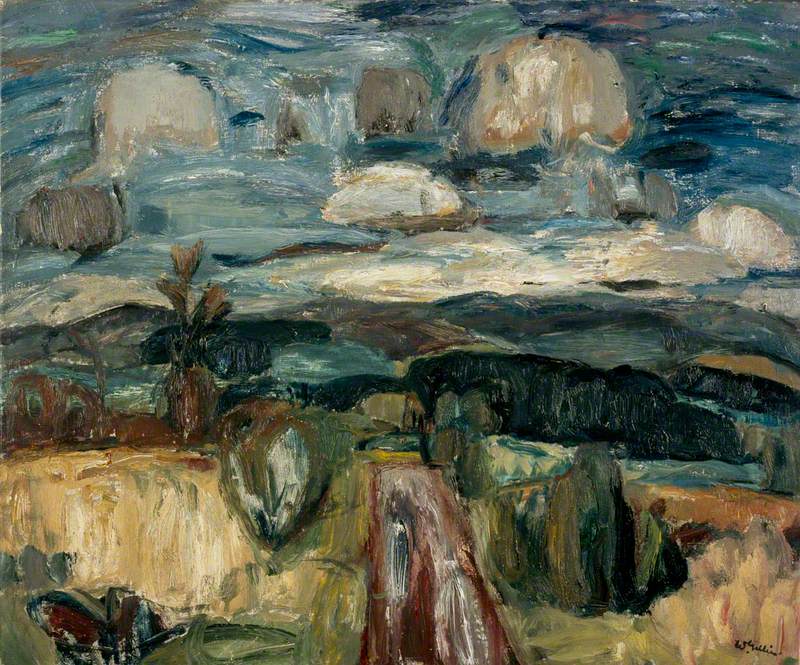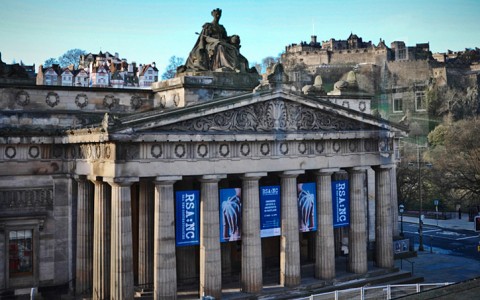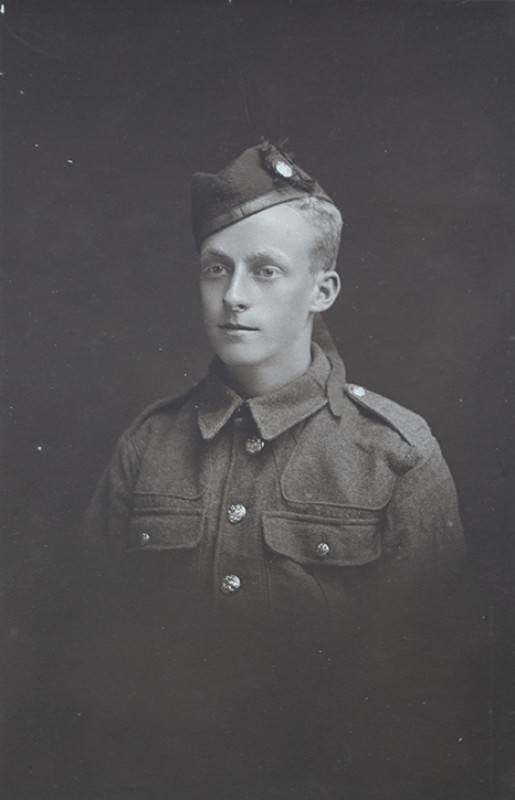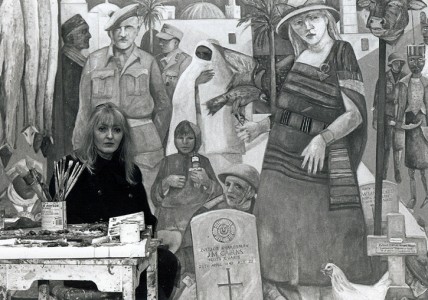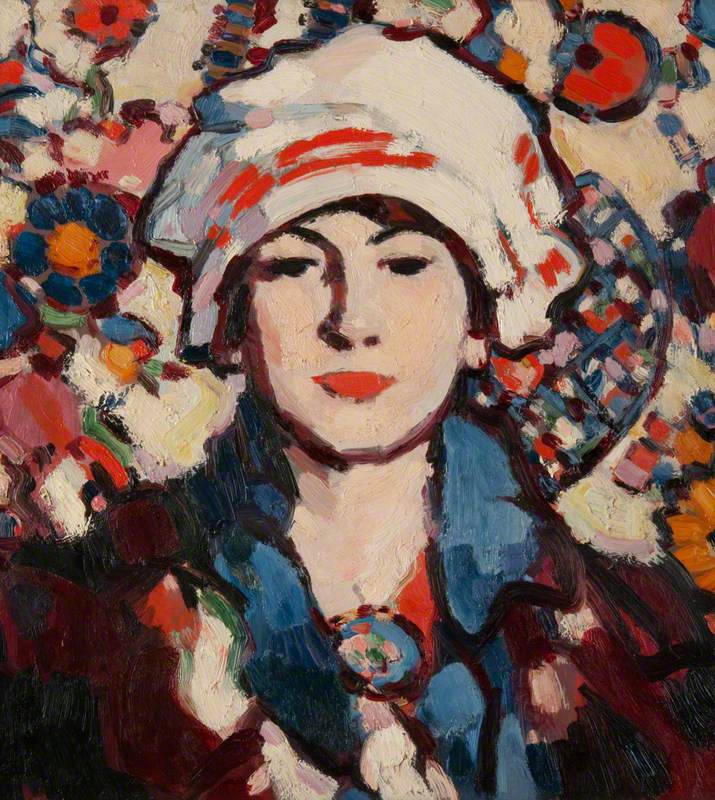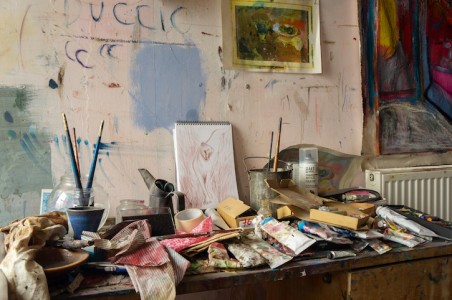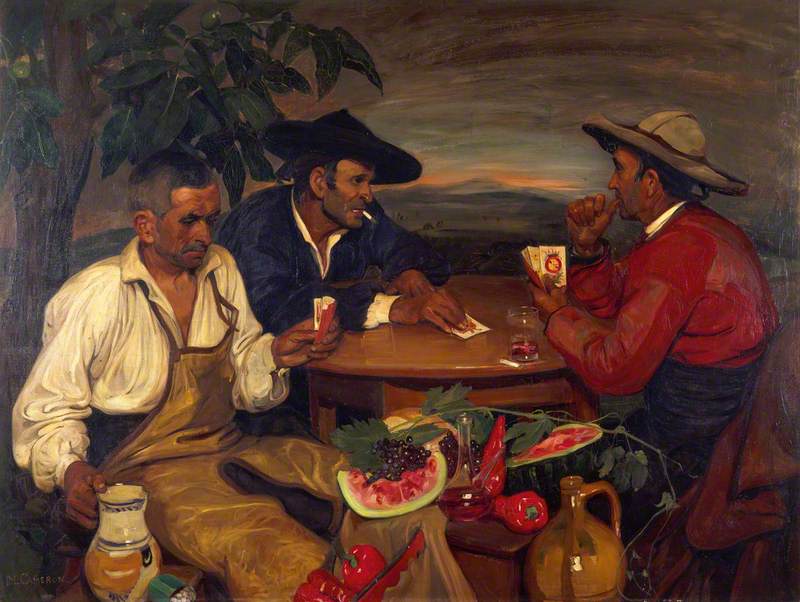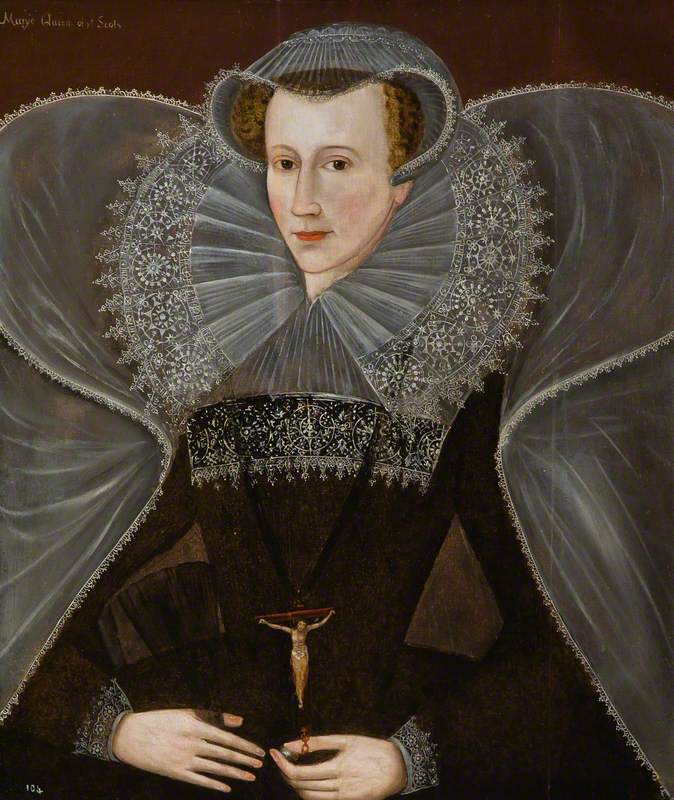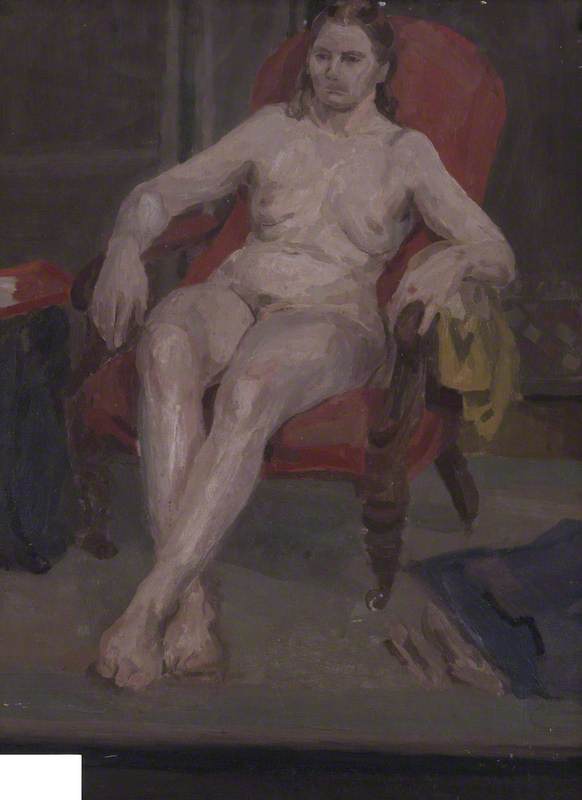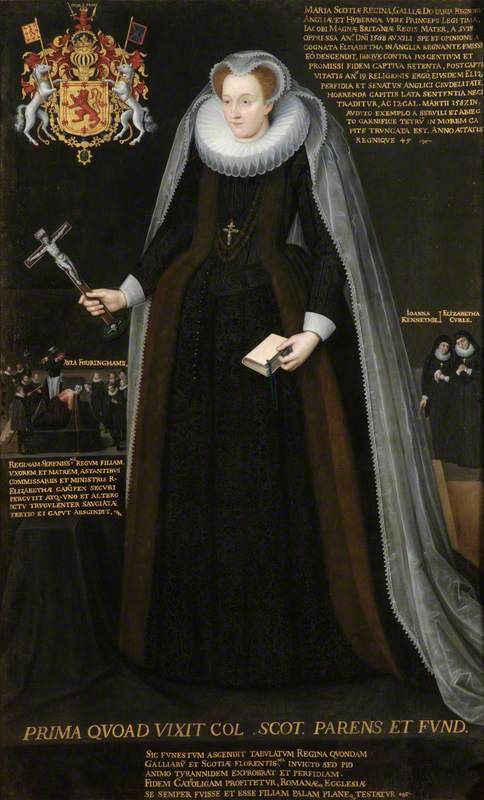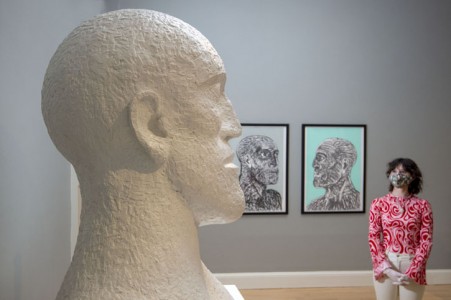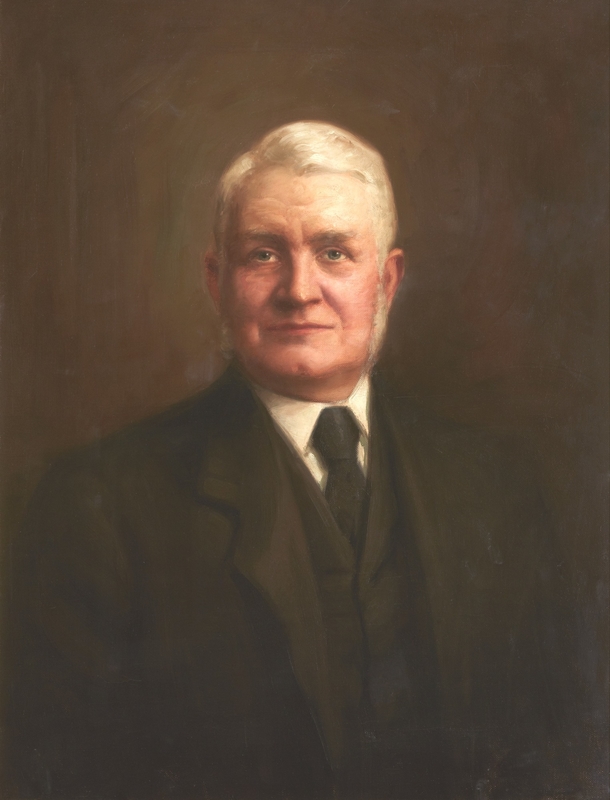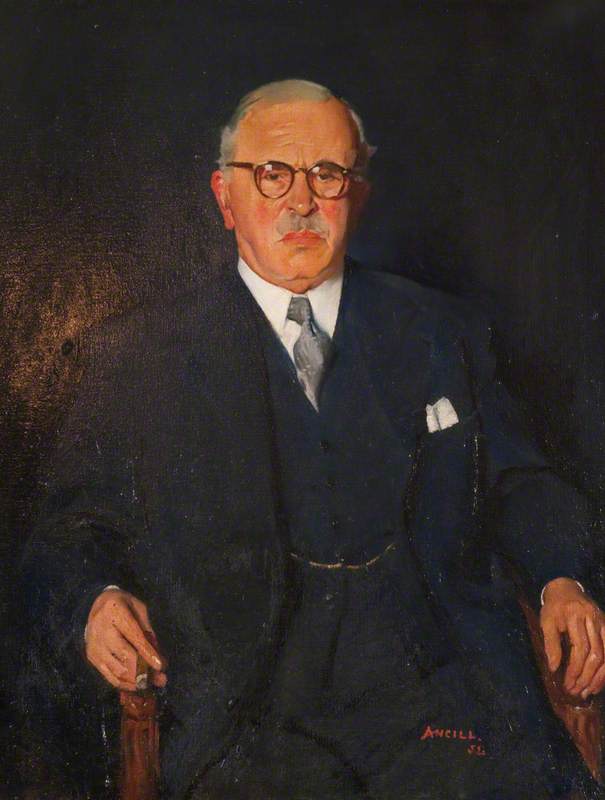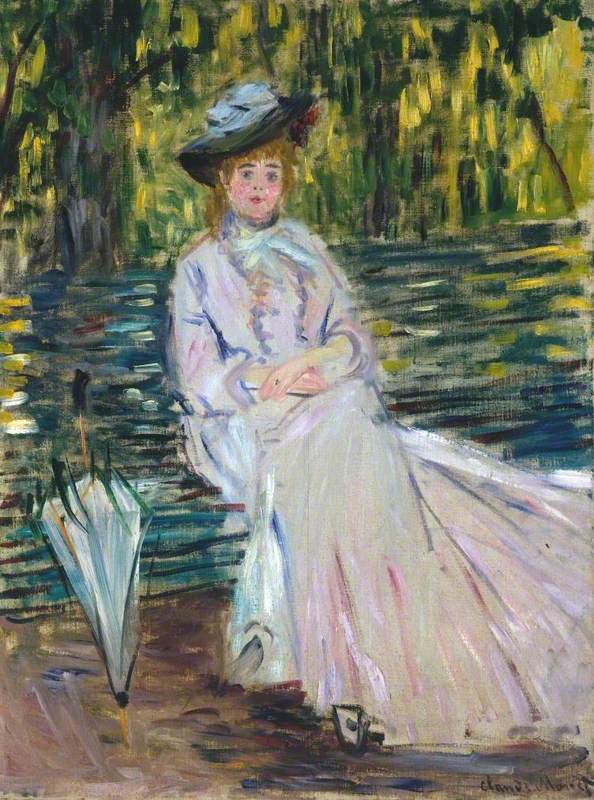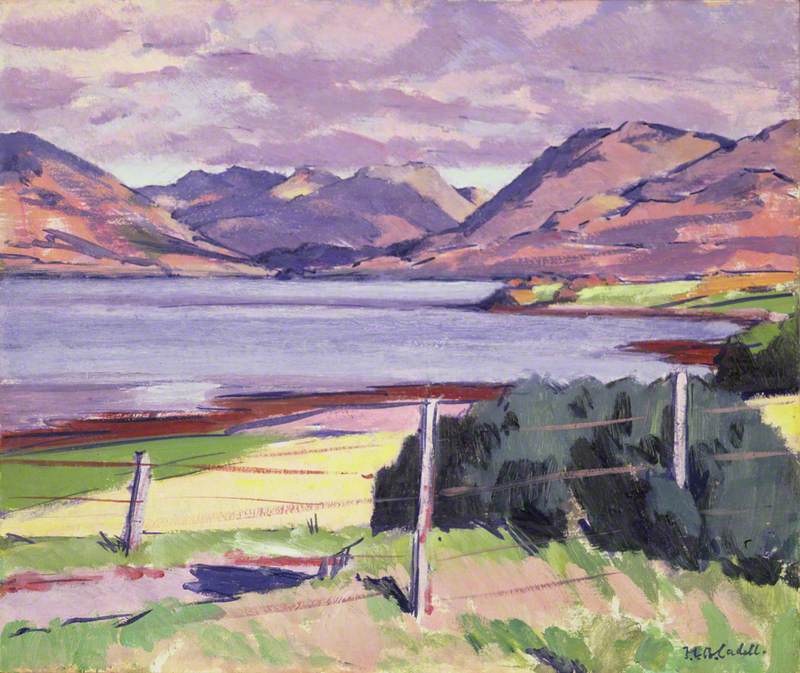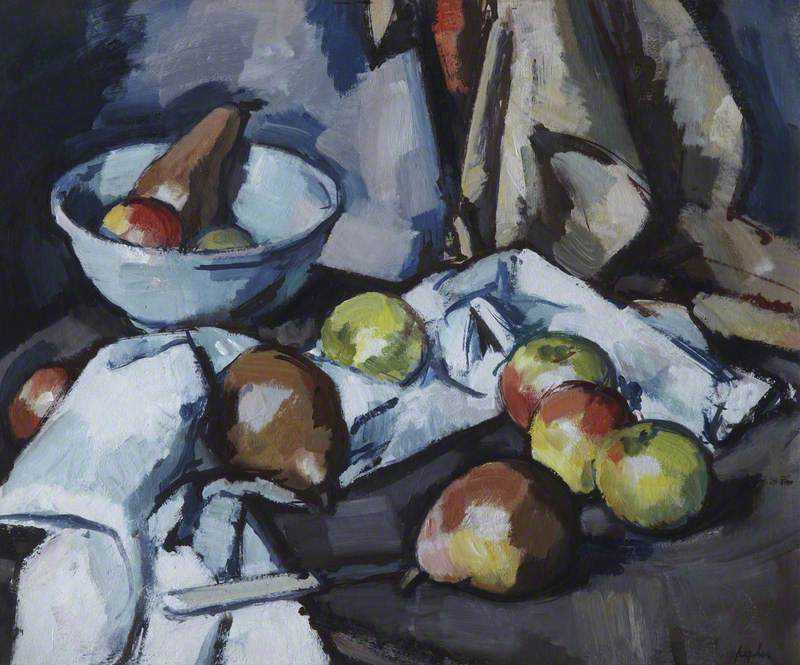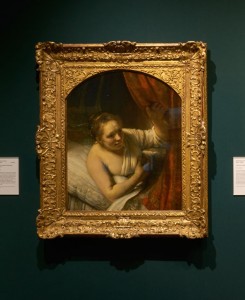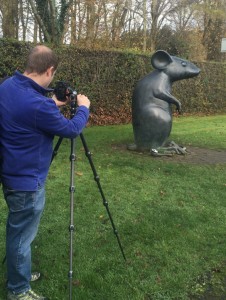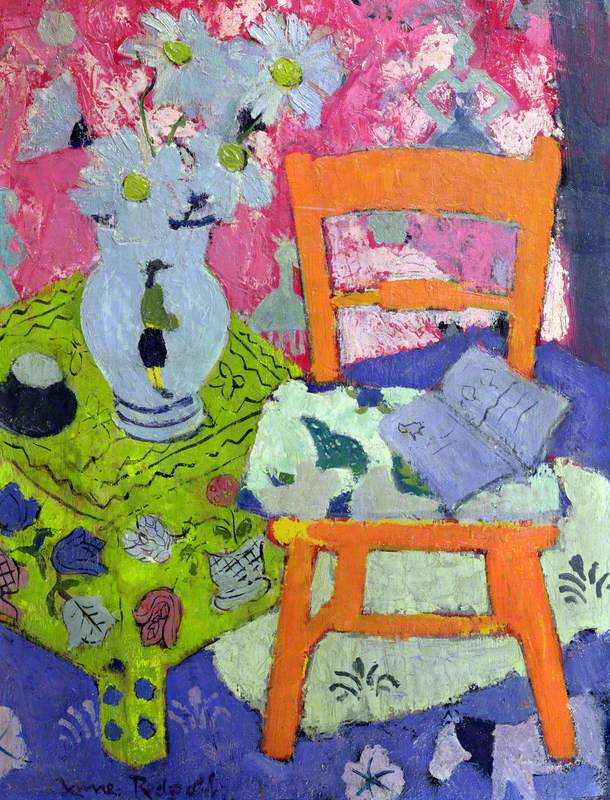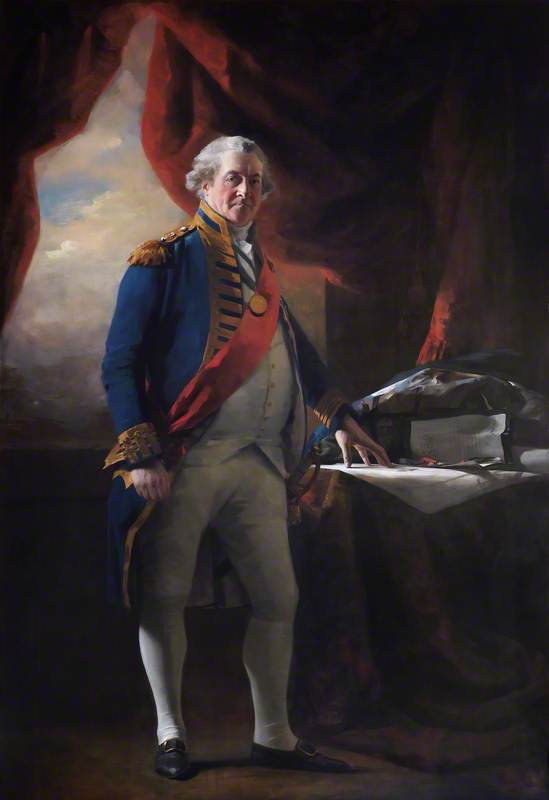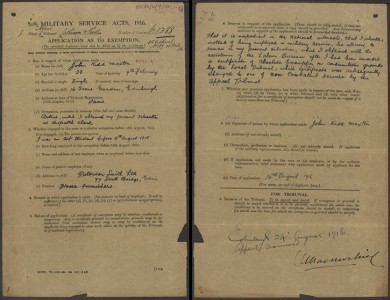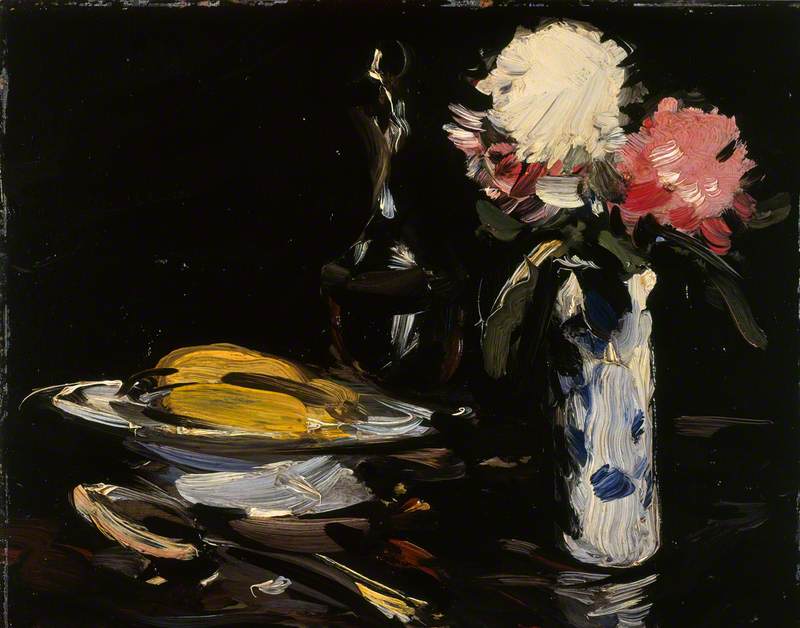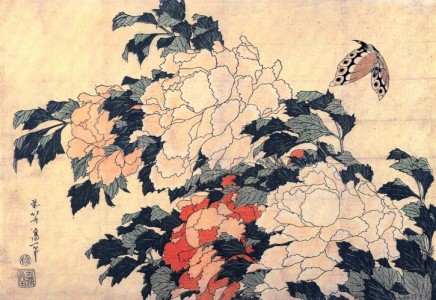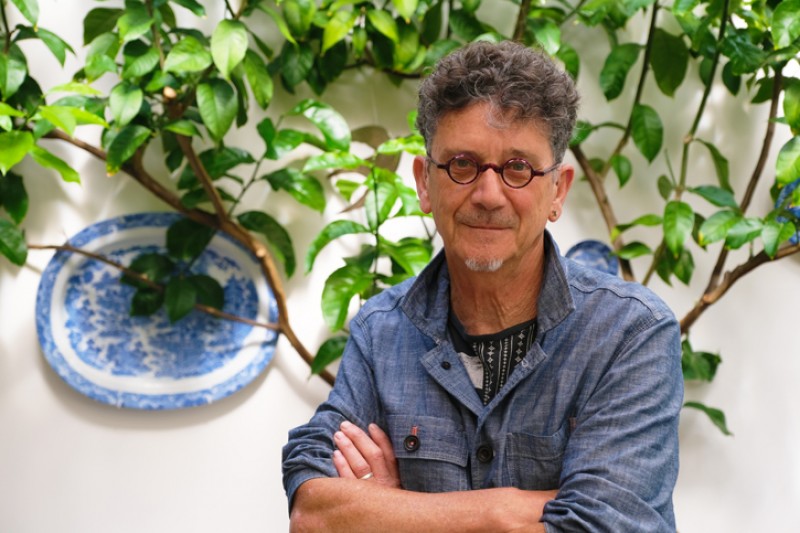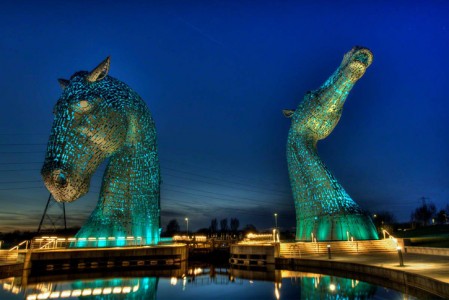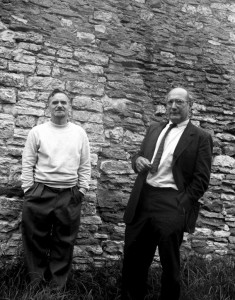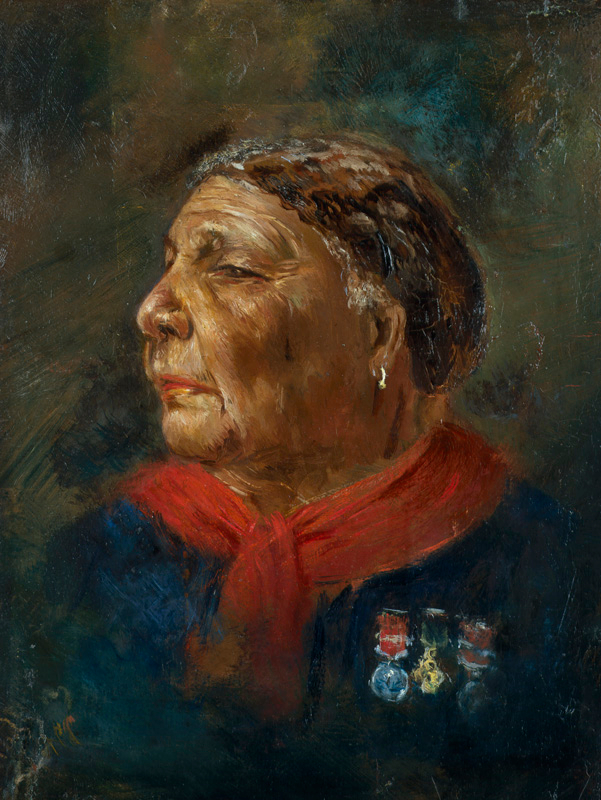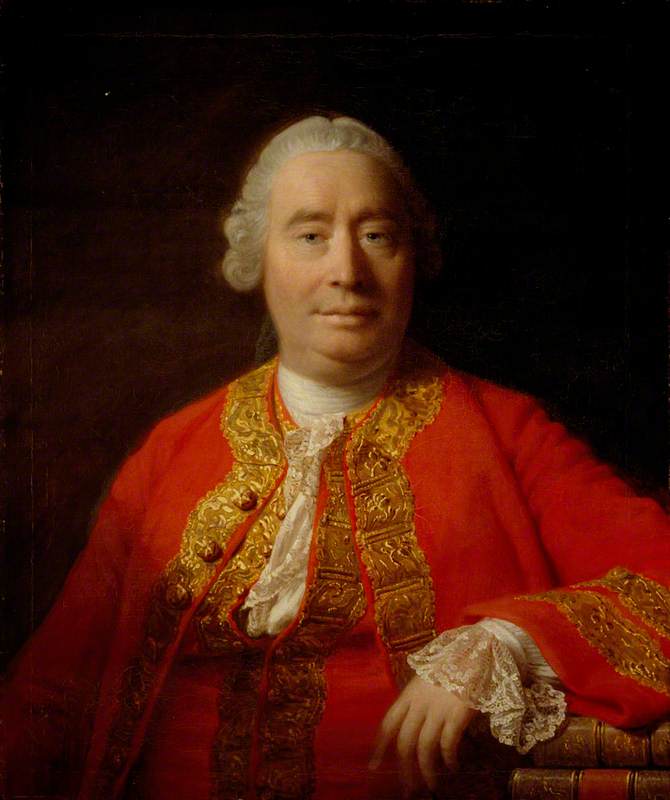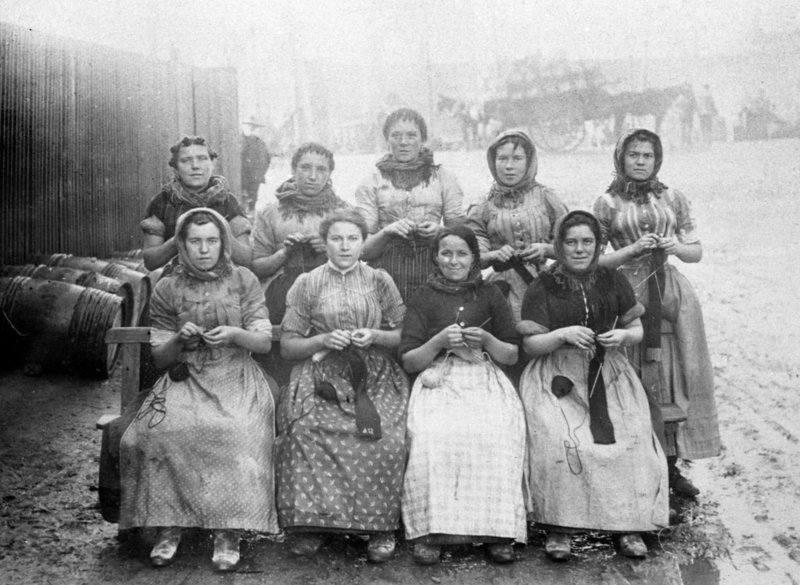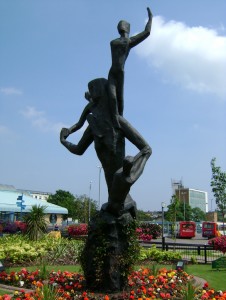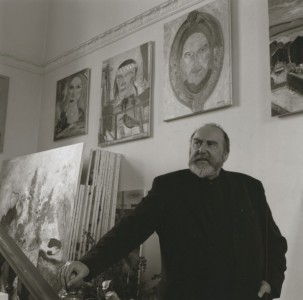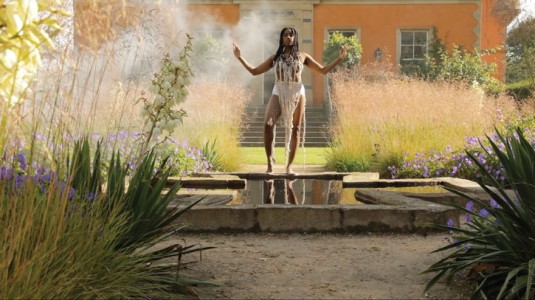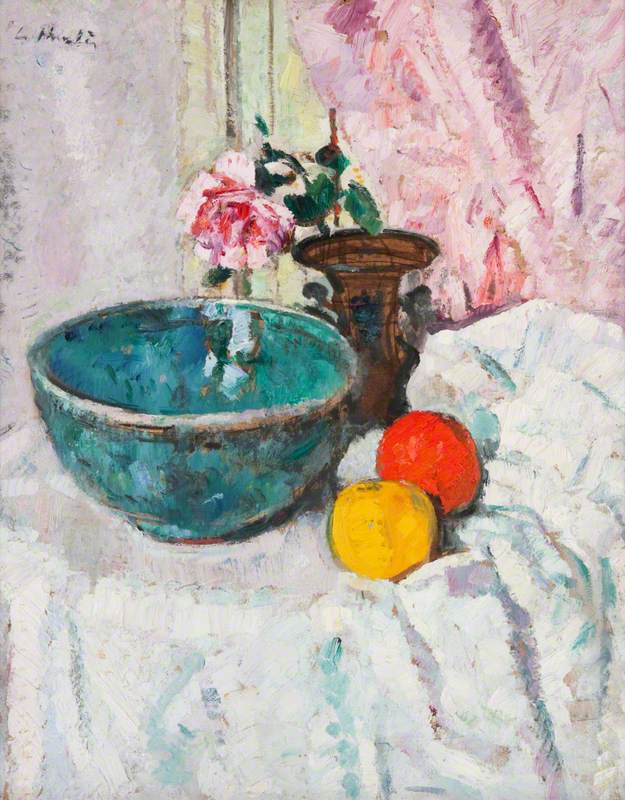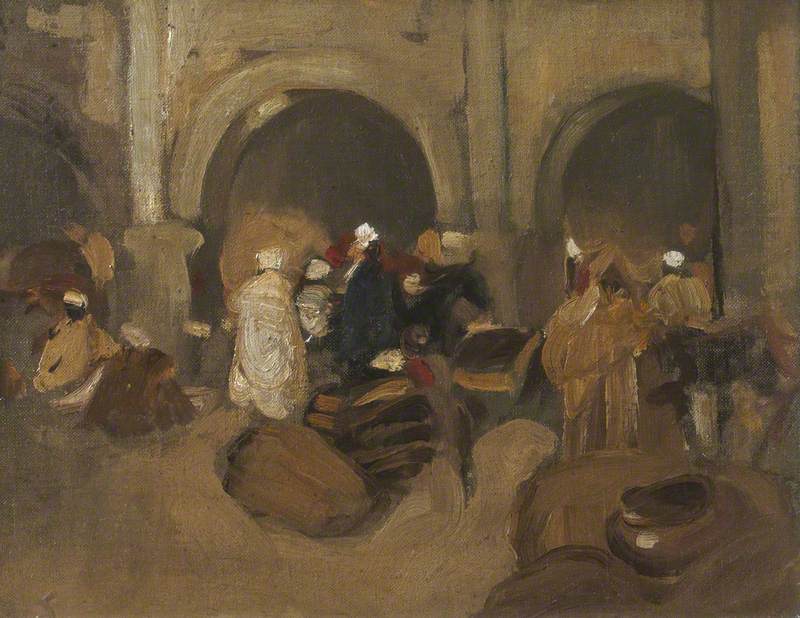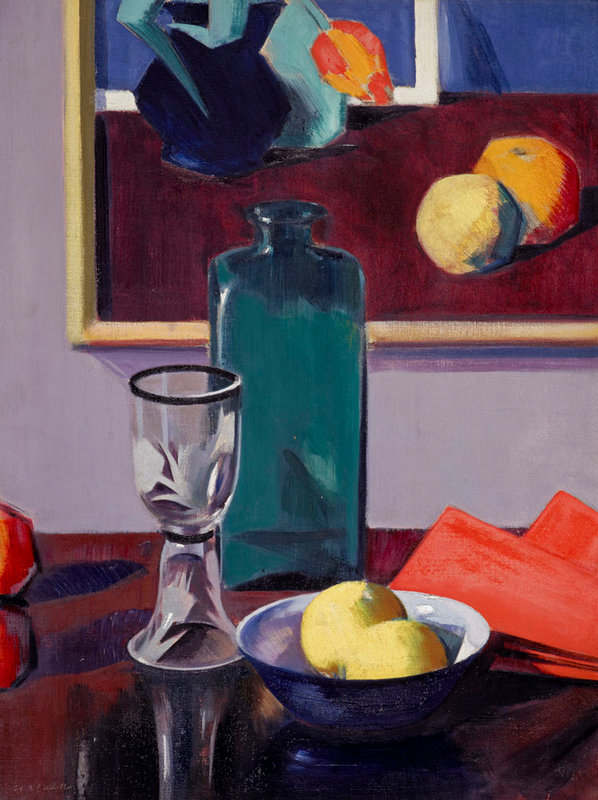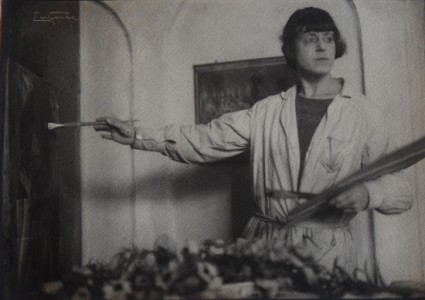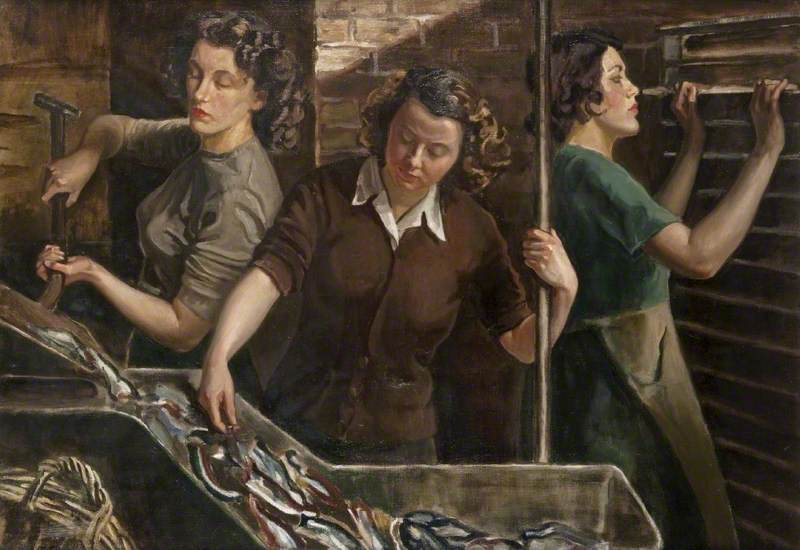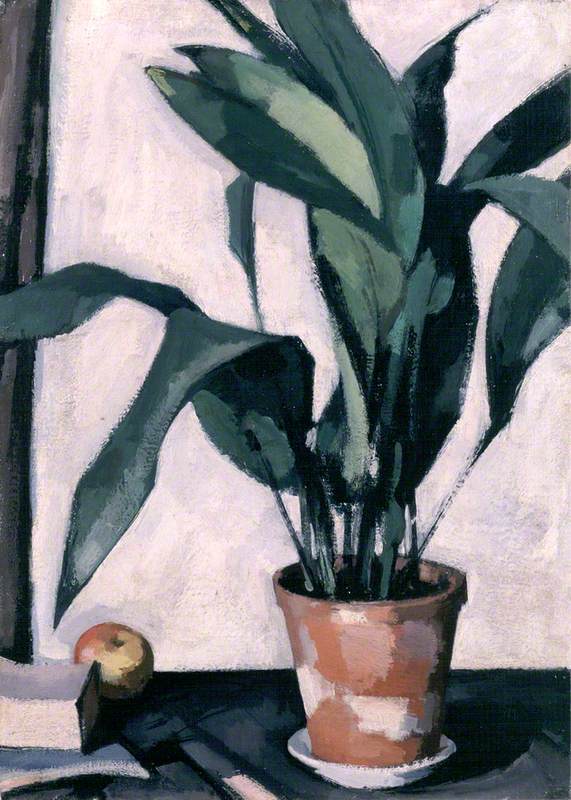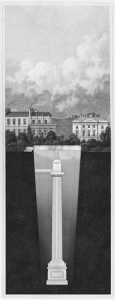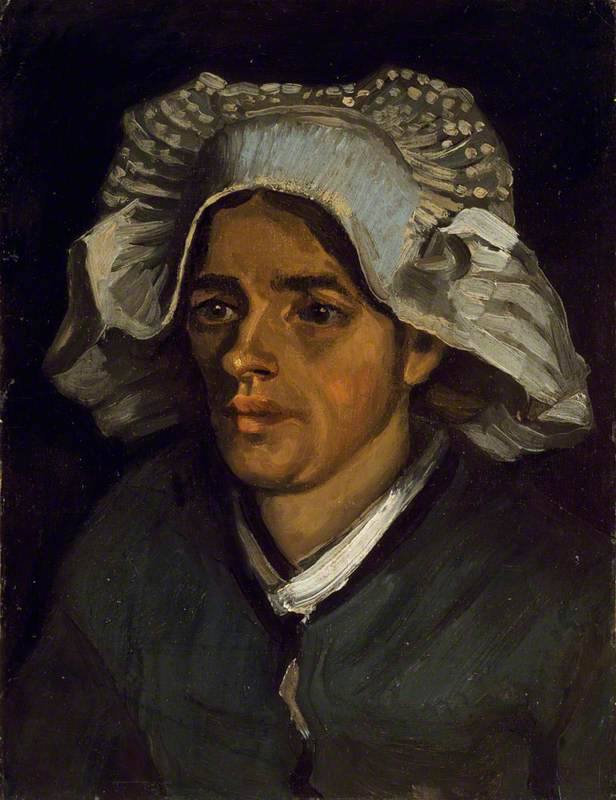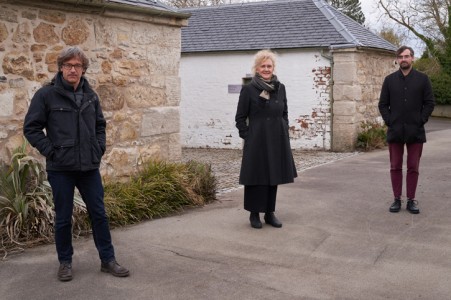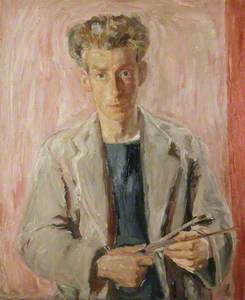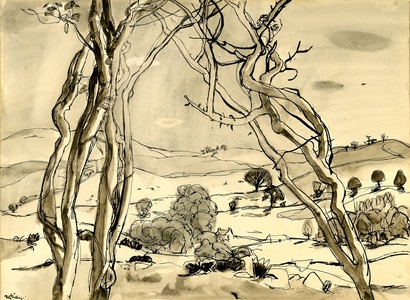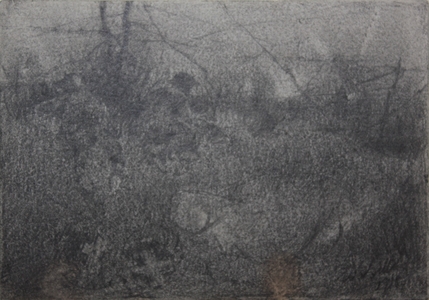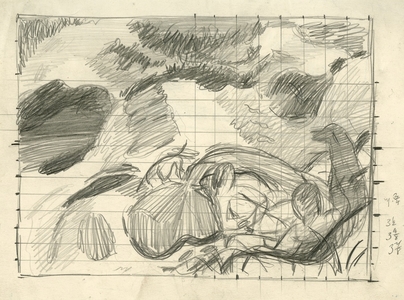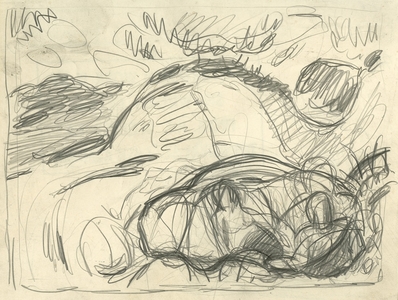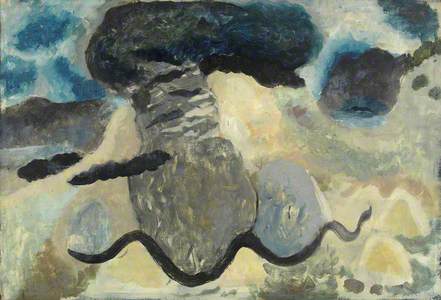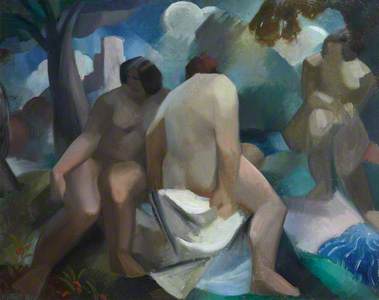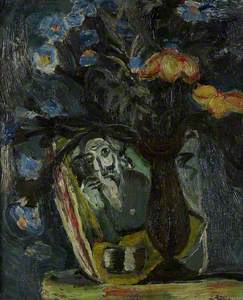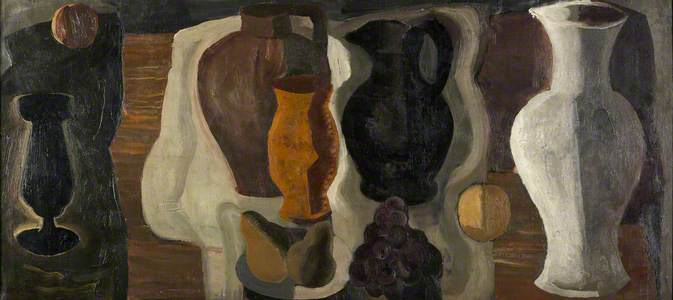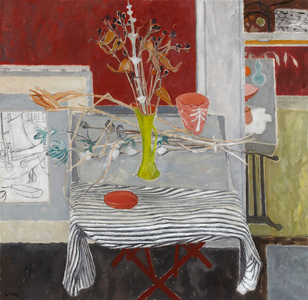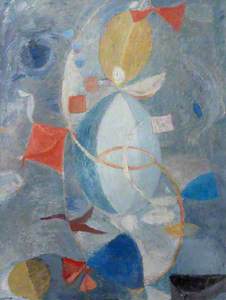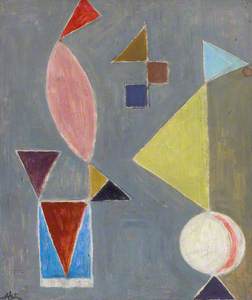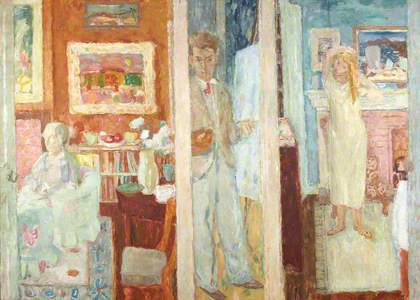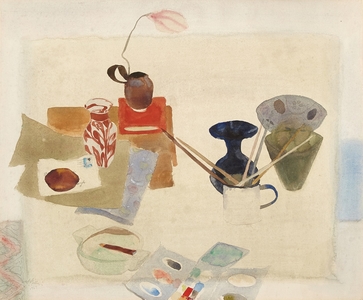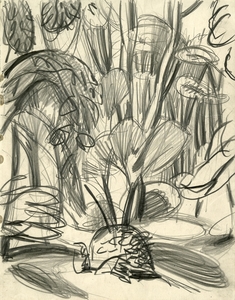For various reasons – artistic, cultural and political – William George Gillies (1898–1973) has not received the credit he merits in the history of British modernism. Since Giorgio Vasari's sixteenth-century book The Lives of the Most Excellent Painters, Sculptors, and Architects, the fascination with artists' lives and their place in art has endured. As with this seminal text, however, past interpretations can mislead and fail to reveal everything that could or should be known.
Sir William George Gillies (1898–1973), Artist, Self Portrait
1940
William George Gillies (1898–1973) 
However, new research can provide answers. Gillies may have had this in mind when he bequeathed his estate to the Royal Scottish Academy, where its presence in the collections has allowed a deeper understanding of his life and artistic practice. On the centenary of Gillies' birth in 1998, an RSA exhibition and publication established his credentials as a major twentieth-century British painter. Now, 25 years on, a new RSA-supported book is expected to fundamentally alter how Gillies' work has been interpreted and integrate him fully into the narrative of British modernism.
The conventional wisdom about Gillies has long been that he was a country painter who specialised in lyrical landscapes and saved his finest work for later, after he had given up the modernist diversions of his youth. Gillies preferred to involve himself in the practice of painting rather than lofty interpretations and so made no attempt to refute this opinion. He let his works speak for themselves. However, recent studies have discovered ways to emphasise their message and reframe earlier accounts of his life.
Known for his expressive oil landscapes, subtly complex still life paintings, and watercolours deftly balanced with ink line and wash, Gillies was a marvellously versatile artist. All of these share a mastery of colour and tone as well as a close connection to Scotland, where he spent his formative years, travelled, and eventually established as an accomplished artist. But there is more to Gillies than first meets the eye.
Gillies' father John and elder sister Janet outside the family business in Haddington
c.1899, photograph 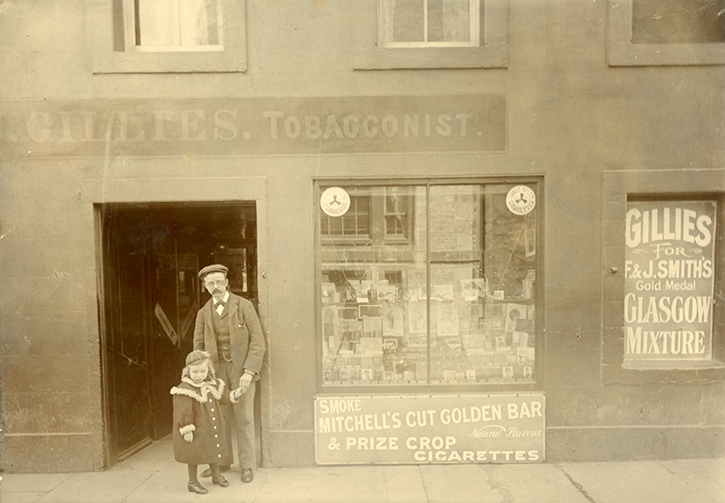
Gillies was born and grew up in Haddington, a bustling market town in East Lothian, near the outskirts of Edinburgh: a place where country traditions and industrial modernity met suffragette radicalism and army reform. Gillies was a gifted young painter and draughtsman who survived army mobilisation in 1917 and three injuries on the Western Front. This existential shock was one of many traumas – beginning in his childhood and lasting for his first 50 years – that impacted his creative output and influenced the evolution of his art.
When he was demobilised in 1919, Gillies went back to Edinburgh College of Art where he had started his studies three years prior. The year 1920 saw the first of some 25 summers touring Scotland on painting trips with his companions. The ensuing variety of subjects and painting style in these landscapes is nothing short of remarkable and this eclecticism may be partly to blame for his evading detection as a modernist.
Picnic on the Beach, Morar I
1933–1934
William George Gillies 
Picnic on the Beach, Morar II
c.1933–1934
William George Gillies 
Rocks and Water, Morar
c.1932–1934
William George Gillies (1898–1973) 
Gillies never allowed one way of thinking or method to rule his painting for too long. He was equally comfortable using an energetic and expressionistic application of paint as he was with a careful and considered cubist massing of forms. In the film Still Life with Honesty (1970), he remarked, 'I believe I am now achieving a simplicity I have striven for, for a long long time, but nothing is static and I am free, in fact I am apt, to change direction without notice. But this is part of the fascination of the job of painting.'
After spending time in Paris in the studio of André Lhote with his friends William Geissler and William Crozier during 1923–1924, Gillies' painting underwent its first significant shift of direction. Although one could contend that Crozier's work was more heavily influenced by Lhote's techniques, Gillies' perspective was undoubtedly expanded by the encounter. Paintings like Bathers, Florence and Trees on the Tyne, Haddington, among others, demonstrate how he assimilated the concepts and applied them to his own visual language.
Still Life with Chagall Print
1933
William George Gillies (1898–1973) 
A collection of Edvard Munch pieces, displayed at the 1931 Annual Exhibition of the Society of Scottish Artists (SSA) in Edinburgh, had a significant impact as well. Munch's work demonstrated to Gillies that he could paint more effectively by painting subjects from his own life. As the danger of war increased once more and Edinburgh voiced its opposition to Hitler's persecution of Jews and Catholics, Gillies subsequently started to open his work to his own traumas from his family and the war.
Still Life with Black Jug
1933
William George Gillies (1898–1973) 
Works like Still Life with Chagall Print acknowledge this in subject and imagery. The black jug or vase in the painting first appeared after the death of his friend William Crozier. It reappears in Still Life with Black Jug, serving as a memorial, while Poppies in a Yellow Vase plays with the presence of the artist, challenging what is true. Much later, his RSA Diploma painting, Still Life – Yellow Jug and Striped Cloth, would summarise his extensive investigation into the ephemeral nature of life and meaning.
Still Life – Yellow Jug and Striped Cloth
c.1955
William George Gillies (1898–1973) 
In 1934, Gillies was delighted by 25 paintings by the Swiss-born German artist Paul Klee that he saw at an SSA exhibition. Gillies and his friend John Maxwell painted half a dozen works about harbours in reaction. But Gillies' interest in Klee was already apparent in his Skye Hills from Morar: the work applies the way Klee handles Tunisian light to Scotland's northwest coast. Gillies created some of his finest watercolours during this experimental period in the 1930s.
Skye Hills from [near] Morar
c.1931, watercolour, 37.6 x 55.8 cm by William George Gillies (1898–1973). National Galleries Scotland (bequeathed by Dr R. A. Lillie, 1977). GMA 1833 ![Skye Hills from [near] Morar](https://d3d00swyhr67nd.cloudfront.net/_source/artuk_stories/62-skye-hills-from-morar-2018ab77232-edited-1-1.jpg)
Laide Looking Towards Ben More
c.1934 or c.1937, watercolour, 55 x 75 cm by William George Gillies (1898–1973). Courtesy of the Blackadder Houston Charitable Trust 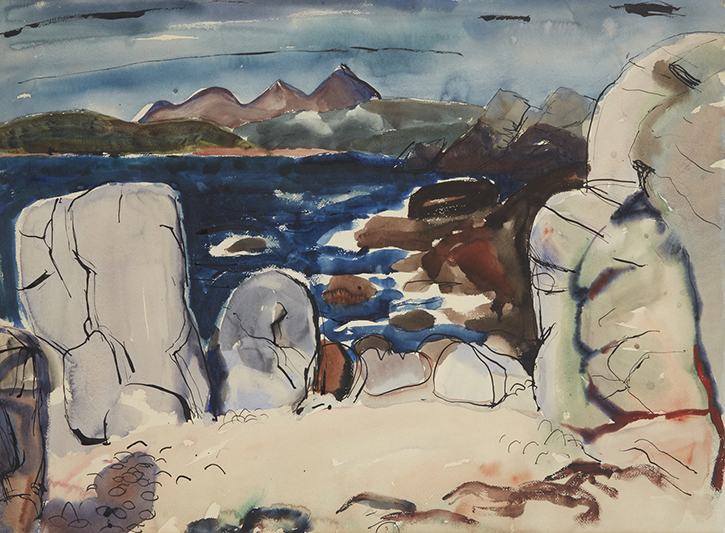
In 1931, Samuel J. Peploe and F. C. B. Cadell successfully proposed Gillies for membership in The Society of Eight. This gave him regular chances to exhibit avant-garde works in Edinburgh within the same period as avant-garde happenings in London. He showed a group of abstracts in 1935 and among these was an abstracted work on a harbour theme prompted by Klee (Harbour, c.1934).
Harbour
c.1934, oil, 83.8 x 101.6 cm by William George Gillies (1898–1973). Private collection 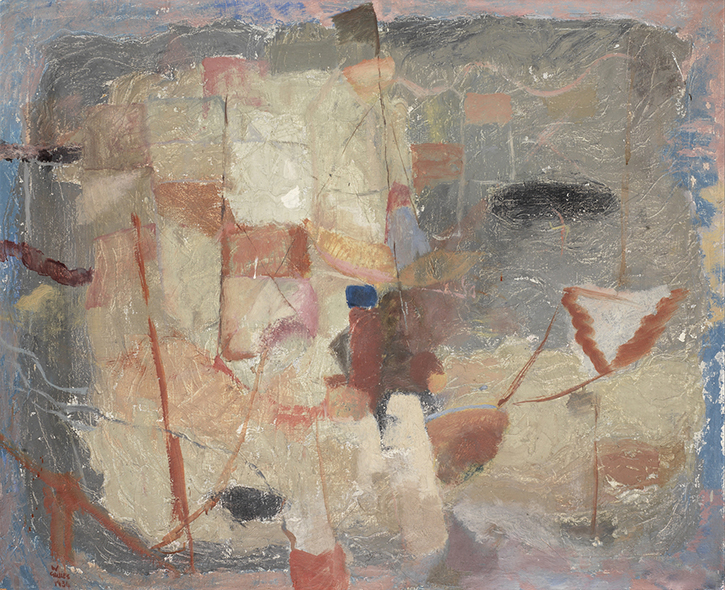
Other surviving abstracts are Ascending and an untitled work (most likely titled Balanced during the exhibition). Klee's interpretations of perception and abstraction remained fundamental to Gillies' subsequent approach, retaining elements of figuration in his abstract work and in his composition.
The loss or sickness of close friends or family members affected Gillies throughout his life, most notably in the years preceding the death of his younger sister Emma in 1936. She had shown early promise in ceramics and Gillies had been particularly close to her. His still life canvases frequently feature Emma's ceramics, creating a sort of object-based portraiture. Gillies rarely painted figurative portraits, but two years after Emma's passing, he created his most ambitious portrait-based painting to date.
In the complex painting Interior, Gillies is depicted alongside his mother and sister Janet. The painting plays with subjective and objective worlds using the artist's own reflection and recollections of his traumatised family. In this way, it acts in homage to Velásquez, and also to Bonnard, from a painterly perspective. Perhaps more than any other work, it manifests the intense, modernist intelligence of Gillies in paint.
Interior of Studio, Temple
c.1965, oil, 97 x 122 cm by William George Gillies (1898–1973). Private collection 
Gillies relocated to Temple, a tiny community in Midlothian, south of Edinburgh, in the shadow of the Moorfoot Hills, the year after he painted Interior. This move has been previously interpreted as the artist returning to his rural origins, to get closer to the landscape that inspired him. But the fact that he moved his family out of Edinburgh as soon as war was proclaimed in 1939 tells a different tale connected to his existential struggles.
Still Life with Colour-Box
1967
William George Gillies 
In his later years, the move to Temple brought with it an attempt to merge still life and landscape, to relate the cottage's interior to its surroundings, and for Gillies to unite his internal and external worlds. He also tried his hand at watercolour still lifes, with tremendous success, in paintings such as Still Life with Colour-Box.
Near Howgate
1951, watercolour, 25.2 x 35.4 cm by William George Gillies (1898–1973). National Galleries Scotland (bequeathed by Dr R. A. Lillie, 1977). GMA 1772 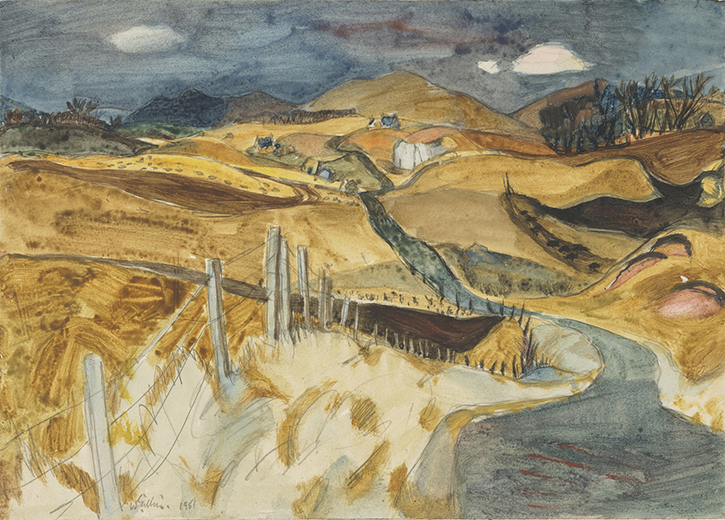
The numerous watercolour landscapes that followed the Second World War may be what Gillies is best known for. However, when all of the artist's works – including his watercolours, drawings, and oils of landscapes and still life – are taken into account, a more coherent and accurate portrait of Gillies begins to take shape: that of a person who discovered, in modernism, a way to creatively exploit existential suffering. Along with the crucial insights offered by Klee, Munch and Lhote, Gillies was motivated by the abstractions of Kandinsky and Delaunay. He was also notably inspired by French artists such as Matisse, Gauguin, Derain and Braque. Closer to home, his work has affinities with painters such as Paul Nash and Graham Sutherland but Gillies had a personal artistic language that was distinctively his own.
While this article is published to coincide with the 50-year anniversary of Gillies' passing on 15th April 2023, there will be more about Gillies, his life and his art in another article to be published on Art UK in September 2023, to celebrate the 125th anniversary of his birth.
William Gillies: Modernism and Nation in British Art by Andrew McPherson will be published by Edinburgh University Press, supported by the RSA, in October 2023. The book will be available to pre-order at the Edinburgh University Press website.
The exhibition 'William Gillies: Modernism and Nation' will be at the Royal Scottish Academy, Edinburgh from 9th December 2023 to 27th January 2024 and on tour around Scotland until 2026.
Sandy Wood, Collections Curator at the RSA
